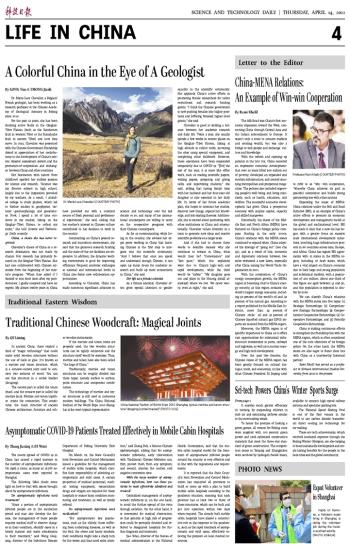
 |
| Professor Rami Khalil. (COURTESY PHOTO) |
The Silk Road was China's first economic expansion toward the West, connecting China through Central Asia and the Indian subcontinent to Europe. It wasn't only a route to connect markets and creating wealth, but was also a bridge to link people and exchange culture and knowledge.
With the reform and opening-up policies in the late 70s, China recorded an impressive economic developmentthat over 40 years lifted 900 million out of poverty, developed an expanded and modern infrastructure, and created stunning metropolitan and prosperous megacities. The policies also included improving people's well-being and living standards, such as health, education, and welfare. The successful economic development has given China a prosperous economy with surplus capital, capacity and skilled manpower.
Historically, the states of the Middle East and North Africa (MENA) have featured on China's foreign policy compass. Starting in the early 2000s, China's relations with the MENA states continued to expand when China adopted the strategy of "going out" (zou chu qu), and as a result of this, economic and diplomatic relations between two sides witnessed a new dawn, especially after China joining the World Trade Organization in 2001.
With the acceleration of China's energy consumption growth, the MENA region is becoming vital to China's energy security, as this region contains the world's largest energy resources, including 52 percent of the world's oil and 42 percent of the natural gas. According to a report published by the Middle East Institute, more than 45 percent of Chinese crude oil and 19 percent of Chinese liquefied natural gas (LNG) imports are sourced from the MENA region.
Moreover, the MENA region is of specific importance to China as it offers vast opportunities for substantial infrastructure investments in ports, railways and highways, as well as in nuclear energy and high-tech development.
Over the past two decades, the Chinese vision of the MENA region has been greatly focused on cultural dialogue, trade, and economics, in line with what Chinese President Xi Jinping used to refer to as "win -win cooperation,"whereby China achieves its goal in peaceful coexistence and builds strong partnership ties with other nations.
Expanding the scope of MENA-China relations under the Belt and Road Initiative (BRI), is an example of China's active efforts to promote its economic development and management model at the global and multinational level. BRI has made it clear that a new era has begun with a greater focus on massive scale international development initiatives, involving huge infrastructure projects in 66 countries across Asia, Europe, and Africa. China has signed BRI agreements with 21 states in the MENA region, including 18 Arab states, which have a vital impact on China's economy due to their large and young population and substantial markets, with a population of 400 million. About one-third of this figure are aged between 15 and 30, and this population is expected to double by 2060.
We can classify China's relations with the MENA states into five types: (1) Strategic Partnerships; (2) Comprehensive Strategic Partnerships; (3) Comprehensive Cooperative Partnerships; (4) Cooperative Partnerships; and (5) Friendly Cooperative Partnerships.
China is making continuous efforts to strengthen the friendship ties with the MENA region, which is often considered one of the core objectives of its foreign policy. On the other hand, the MENA states are also eager to foster close ties with China as a trustworthy historical partner.
Rami Khalil has served as a professor in Sichuan International Studies University from 2012 to the present.







